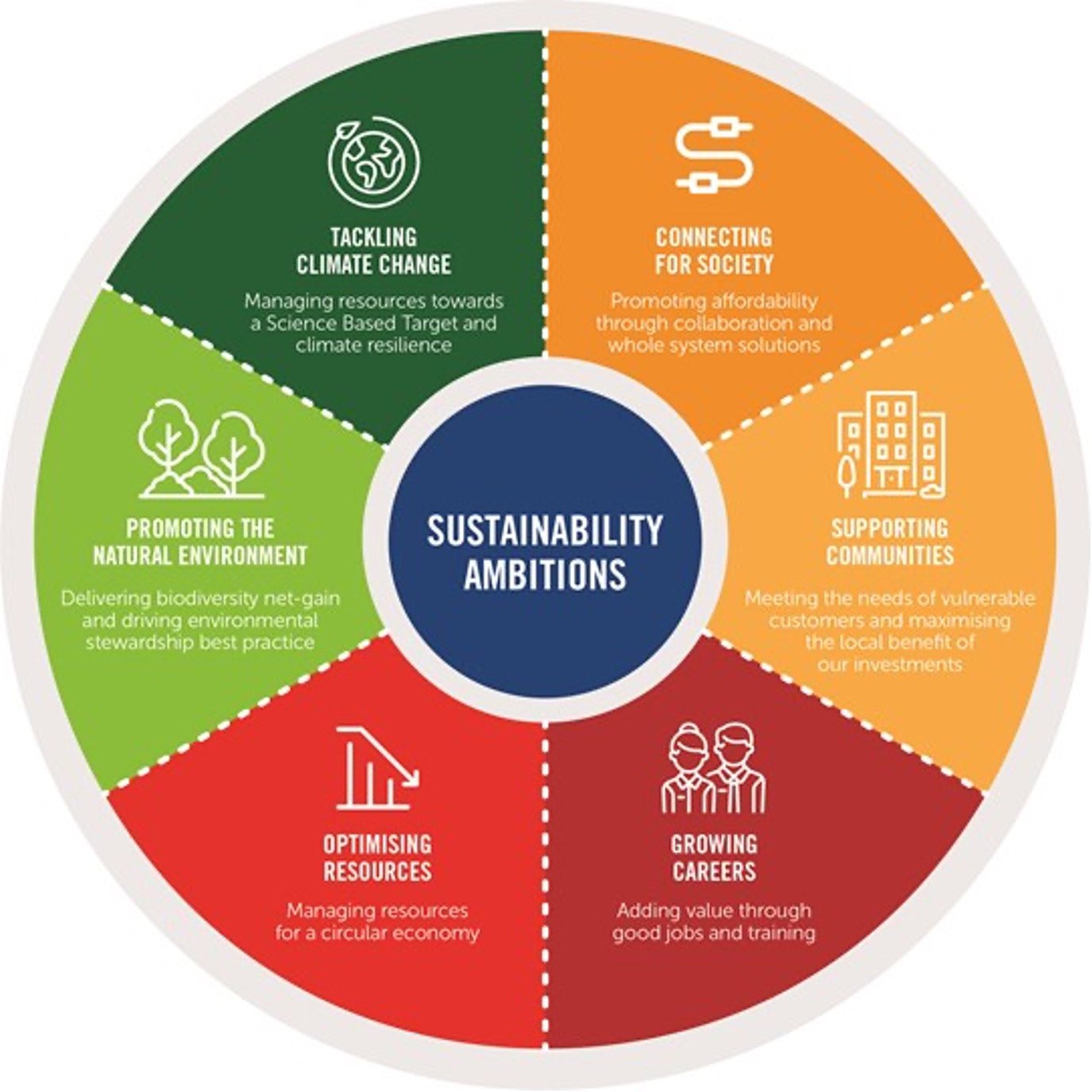Why Going Green Matters for Startups
Environmental sustainability is no longer a nicety, but a necessity for startups. In today’s competitive market, embracing sustainability can be a key differentiator for entrepreneurs. Not only can it help reduce costs and enhance brand reputation, but it also demonstrates a commitment to social responsibility and compliance with regulations. By prioritizing environmental sustainability, startups can reap numerous benefits that contribute to their long-term success.
One of the primary advantages of environmental sustainability for startups is cost savings. By reducing energy consumption, water usage, and waste management, businesses can significantly lower their operational costs. For instance, implementing energy-efficient lighting and heating systems can lead to substantial savings on utility bills. Moreover, sustainable practices can also help reduce waste disposal costs and minimize the environmental impact of supply chain operations.
Another significant benefit of environmental sustainability for startups is enhanced brand reputation. Consumers are increasingly conscious of the environmental and social impact of the products they buy. By embracing sustainability, startups can demonstrate their commitment to social responsibility and appeal to the growing market of eco-conscious consumers. This can lead to increased customer loyalty, improved brand reputation, and ultimately, increased revenue.
Furthermore, environmental sustainability is essential for compliance with regulations. Governments worldwide are implementing stricter environmental regulations, and startups that fail to comply may face severe penalties. By prioritizing sustainability, entrepreneurs can ensure that their businesses are compliant with regulations and avoid costly fines and reputational damage.
In addition to these benefits, environmental sustainability can also be a key differentiator for startups in a competitive market. By embracing sustainable practices, entrepreneurs can differentiate their businesses from competitors and establish a unique selling proposition. This can be particularly effective in industries where sustainability is a key concern, such as fashion, food, and cosmetics.
In conclusion, environmental sustainability is crucial for startups that want to succeed in today’s competitive market. By prioritizing sustainability, entrepreneurs can reduce costs, enhance brand reputation, comply with regulations, and differentiate their businesses from competitors. As the demand for sustainable products and services continues to grow, startups that embrace environmental sustainability will be well-positioned for long-term success.
Assessing Your Environmental Impact: A Startup’s Guide
Conducting an environmental impact assessment is a crucial step for startups looking to prioritize environmental sustainability. This process involves evaluating the environmental effects of a startup’s operations, including energy consumption, water usage, waste management, and supply chain impact. By assessing their environmental impact, startups can identify areas for improvement and set sustainability goals that align with their business objectives.
To conduct an environmental impact assessment, startups should begin by gathering data on their energy consumption, water usage, and waste management practices. This can be done by reviewing utility bills, conducting waste audits, and assessing supply chain operations. Startups should also consider the environmental impact of their products and services, including the sourcing of materials, manufacturing processes, and end-of-life management.
Once the data has been collected, startups can use various tools and frameworks to assess their environmental impact. One popular framework is the Environmental Sustainability Assessment (ESA), which provides a comprehensive approach to evaluating environmental performance. The ESA framework considers factors such as energy consumption, water usage, waste management, and supply chain impact, and provides a scorecard for startups to track their progress.
Another useful tool for assessing environmental impact is the Life Cycle Assessment (LCA) methodology. LCA is a systematic process for evaluating the environmental impacts of products and services throughout their entire life cycle, from raw material extraction to end-of-life disposal. By using LCA, startups can identify areas for improvement and develop strategies for reducing their environmental footprint.
In addition to these tools and frameworks, startups can also engage with stakeholders, including employees, customers, and suppliers, to gather feedback and insights on their environmental impact. This can help startups identify areas for improvement and develop sustainability goals that align with their business objectives.
By conducting an environmental impact assessment, startups can identify areas for improvement and develop strategies for reducing their environmental footprint. This can help startups prioritize environmental sustainability, reduce costs, and enhance their brand reputation. By taking a proactive approach to environmental sustainability, startups can contribute to a more sustainable future and achieve long-term success.
How to Develop a Sustainable Business Model
Developing a sustainable business model is crucial for startups that want to prioritize environmental sustainability. A sustainable business model is one that integrates environmental, social, and economic considerations into its operations, products, and services. By adopting a sustainable business model, startups can reduce their environmental footprint, improve their brand reputation, and contribute to a more sustainable future.
There are several key elements to a sustainable business model, including product design, sourcing, and end-of-life management. Product design should prioritize sustainability, using materials and processes that minimize waste and environmental impact. Sourcing should focus on sustainable materials and suppliers, reducing the risk of environmental and social harm. End-of-life management should consider the disposal and recycling of products, minimizing waste and promoting the reuse of materials.
Circular economy principles are also essential for a sustainable business model. The circular economy is a regenerative system that aims to keep resources in use for as long as possible, extracting the maximum value from them, and recovering and regenerating materials at the end of their service life. By adopting circular economy principles, startups can reduce waste, promote the reuse of materials, and create new revenue streams.
There are many examples of successful sustainable business models that startups can learn from. For example, Patagonia’s environmental activism and sustainable manufacturing practices have made it a leader in the outdoor apparel industry. Warby Parker’s “Home Try-On” program, which allows customers to try on glasses at home before purchasing, has reduced waste and improved customer satisfaction. These companies demonstrate that sustainability and profitability can go hand-in-hand.
Startups can also use various tools and frameworks to develop a sustainable business model. The Sustainable Business Model Canvas is a useful tool for startups to design and innovate sustainable business models. The canvas provides a visual framework for startups to identify and prioritize sustainability opportunities, and to develop a business model that integrates environmental, social, and economic considerations.
In addition to these tools and frameworks, startups can also engage with stakeholders, including customers, suppliers, and investors, to develop a sustainable business model. By engaging with stakeholders, startups can identify sustainability opportunities, prioritize sustainability goals, and develop a business model that meets the needs of all stakeholders.
By developing a sustainable business model, startups can prioritize environmental sustainability, improve their brand reputation, and contribute to a more sustainable future. By integrating environmental, social, and economic considerations into their operations, products, and services, startups can create a business model that is both profitable and sustainable.
Reducing Energy Consumption and Greenhouse Gas Emissions
Reducing energy consumption and greenhouse gas emissions is a critical aspect of environmental sustainability for startups. By implementing energy-efficient practices and transitioning to renewable energy sources, startups can minimize their environmental footprint and contribute to a more sustainable future.
One of the most effective ways to reduce energy consumption is to implement energy-efficient lighting, heating, and cooling systems. LED lighting, for example, can reduce energy consumption by up to 80% compared to traditional lighting systems. Similarly, energy-efficient HVAC systems can reduce energy consumption by up to 30%.
Another strategy for reducing energy consumption is to optimize energy usage through smart building technologies. Smart building technologies, such as building management systems (BMS) and energy management systems (EMS), can help startups monitor and control energy usage in real-time, identifying areas for improvement and optimizing energy efficiency.
In addition to reducing energy consumption, startups can also transition to renewable energy sources, such as solar and wind power. Renewable energy sources can provide a reliable and sustainable source of energy, reducing dependence on fossil fuels and minimizing greenhouse gas emissions.
Several startups have successfully transitioned to renewable energy sources, demonstrating the feasibility and benefits of renewable energy. For example, Google has invested heavily in renewable energy, powering over 50% of its data centers with renewable energy. Similarly, Amazon has committed to powering 50% of its data centers with renewable energy by 2025.
Startups can also benefit from government incentives and tax credits for transitioning to renewable energy sources. For example, the Solar Investment Tax Credit (ITC) provides a tax credit of up to 30% of the cost of solar panel installation. Similarly, the Wind Production Tax Credit (PTC) provides a tax credit of up to 2.3 cents per kilowatt-hour of wind energy produced.
By reducing energy consumption and transitioning to renewable energy sources, startups can minimize their environmental footprint, reduce energy costs, and contribute to a more sustainable future. By prioritizing environmental sustainability, startups can also enhance their brand reputation, improve customer loyalty, and attract top talent.
Sustainable Supply Chain Management for Startups
Sustainable supply chain management is a critical aspect of environmental sustainability for startups. By implementing sustainable supply chain practices, startups can reduce their environmental footprint, improve their brand reputation, and contribute to a more sustainable future.
One of the most effective ways to implement sustainable supply chain management is to source materials from sustainable suppliers. This can include suppliers that use renewable energy, reduce waste, and promote fair labor practices. Startups can also consider using sustainable materials, such as recycled materials, bioplastics, and sustainably sourced wood.
Another strategy for sustainable supply chain management is to reduce waste and emissions throughout the supply chain. This can include implementing efficient logistics and transportation systems, reducing packaging waste, and promoting recycling and reuse. Startups can also consider using supply chain management software to track and optimize their supply chain operations.
Startups can also benefit from implementing fair labor practices throughout their supply chain. This can include ensuring that suppliers pay a living wage, provide safe working conditions, and promote diversity and inclusion. By promoting fair labor practices, startups can improve their brand reputation, reduce the risk of supply chain disruptions, and contribute to a more sustainable future.
Several startups have successfully implemented sustainable supply chain management practices, demonstrating the feasibility and benefits of sustainable supply chain management. For example, Patagonia has implemented a sustainable supply chain program that includes sourcing materials from sustainable suppliers, reducing waste and emissions, and promoting fair labor practices. Similarly, REI has implemented a sustainable supply chain program that includes sourcing materials from sustainable suppliers, reducing waste and emissions, and promoting fair labor practices.
Startups can also benefit from collaborating with suppliers and stakeholders to implement sustainable supply chain management practices. By working together, startups can share best practices, reduce costs, and improve their brand reputation. Startups can also consider joining sustainable supply chain initiatives, such as the Sustainable Supply Chain Initiative, to connect with other companies and stakeholders that share their commitment to sustainability.
By implementing sustainable supply chain management practices, startups can reduce their environmental footprint, improve their brand reputation, and contribute to a more sustainable future. By prioritizing sustainability, startups can also improve their bottom line, reduce the risk of supply chain disruptions, and attract top talent.
Measuring and Reporting Sustainability Performance
Measuring and reporting sustainability performance is a critical aspect of environmental sustainability for startups. By tracking and reporting on sustainability progress, startups can demonstrate their commitment to sustainability, identify areas for improvement, and make informed decisions about their sustainability strategies.
One of the most effective ways to measure sustainability performance is to track key performance indicators (KPIs). KPIs can include metrics such as energy consumption, water usage, waste reduction, and greenhouse gas emissions. By tracking KPIs, startups can identify areas for improvement and set sustainability goals.
Another strategy for measuring sustainability performance is to conduct regular sustainability assessments. Sustainability assessments can include evaluating energy consumption, water usage, waste management, and supply chain impact. By conducting regular sustainability assessments, startups can identify areas for improvement and develop strategies for reducing their environmental footprint.
Startups can also benefit from reporting on sustainability progress. Reporting on sustainability progress can include publishing annual sustainability reports, providing regular updates on sustainability goals and progress, and engaging with stakeholders on sustainability issues. By reporting on sustainability progress, startups can demonstrate their commitment to sustainability, build trust with stakeholders, and attract investors and customers who value sustainability.
Several startups have successfully implemented sustainability reporting practices, demonstrating the feasibility and benefits of sustainability reporting. For example, Patagonia has published annual environmental and social responsibility reports since 1996, providing transparency and accountability on its sustainability progress. Similarly, REI has published annual sustainability reports since 2006, highlighting its progress on sustainability goals and initiatives.
Startups can also benefit from using sustainability reporting frameworks and standards, such as the Global Reporting Initiative (GRI) and the Sustainability Accounting Standards Board (SASB). These frameworks and standards provide guidance on how to measure and report on sustainability performance, ensuring that startups are using consistent and comparable metrics.
By measuring and reporting on sustainability performance, startups can demonstrate their commitment to sustainability, identify areas for improvement, and make informed decisions about their sustainability strategies. By prioritizing transparency and accountability in sustainability reporting, startups can build trust with stakeholders, attract investors and customers who value sustainability, and contribute to a more sustainable future.
Overcoming Common Sustainability Challenges for Startups
Despite the importance of environmental sustainability for startups, many entrepreneurs face common sustainability challenges that can hinder their ability to prioritize sustainability. These challenges can include limited resources, lack of expertise, and competing priorities.
One of the most significant sustainability challenges faced by startups is limited resources. Startups often have limited budgets, which can make it difficult to invest in sustainability initiatives. However, there are several strategies that startups can use to overcome this challenge. For example, startups can start by implementing small-scale sustainability initiatives, such as reducing energy consumption or implementing recycling programs.
Another common sustainability challenge faced by startups is lack of expertise. Startups may not have the necessary expertise or knowledge to develop and implement effective sustainability strategies. However, there are several resources available to help startups overcome this challenge. For example, startups can consult with sustainability experts, attend sustainability workshops and conferences, and participate in online sustainability communities.
Competing priorities is another common sustainability challenge faced by startups. Startups often have multiple priorities, such as growing their business, increasing revenue, and improving their products and services. However, sustainability should be a top priority for startups, as it can have a significant impact on their long-term success. Startups can overcome this challenge by integrating sustainability into their business strategy and making it a core part of their operations.
Several startups have successfully overcome common sustainability challenges, demonstrating the feasibility and benefits of prioritizing sustainability. For example, Patagonia has implemented a number of sustainability initiatives, including using environmentally-friendly materials, reducing waste, and promoting fair labor practices. Similarly, REI has implemented a number of sustainability initiatives, including using renewable energy, reducing waste, and promoting sustainable supply chain practices.
Startups can also benefit from collaborating with other businesses, organizations, and stakeholders to overcome common sustainability challenges. By working together, startups can share best practices, reduce costs, and improve their sustainability performance. Startups can also participate in sustainability initiatives and programs, such as the Sustainable Business Council and the Environmental Defense Fund’s Green Business Program.
By overcoming common sustainability challenges, startups can prioritize environmental sustainability, reduce their environmental footprint, and contribute to a more sustainable future. By making sustainability a core part of their operations, startups can also improve their brand reputation, increase customer loyalty, and attract top talent.
Conclusion: Embracing Sustainability for Long-Term Success
Environmental sustainability is a critical aspect of business practices for startups, and it is essential for entrepreneurs to prioritize sustainability in their operations. By embracing sustainability, startups can reduce their environmental footprint, improve their brand reputation, and contribute to a more sustainable future.
The benefits of sustainability for startups are numerous. By reducing energy consumption and greenhouse gas emissions, startups can save costs and improve their bottom line. By implementing sustainable supply chain management practices, startups can reduce waste, promote fair labor practices, and improve their brand reputation. By measuring and reporting sustainability performance, startups can demonstrate their commitment to sustainability and attract investors and customers who value sustainability.
However, startups may face common sustainability challenges, including limited resources, lack of expertise, and competing priorities. To overcome these challenges, startups can start by implementing small-scale sustainability initiatives, consulting with sustainability experts, and participating in online sustainability communities.
By prioritizing sustainability, startups can achieve long-term success and contribute to a more sustainable future. Sustainability is no longer a nicety, but a necessity for businesses that want to thrive in today’s competitive market. By embracing sustainability, startups can reduce their environmental footprint, improve their brand reputation, and attract investors and customers who value sustainability.
In conclusion, environmental sustainability is a critical aspect of business practices for startups, and it is essential for entrepreneurs to prioritize sustainability in their operations. By embracing sustainability, startups can achieve long-term success, reduce their environmental footprint, and contribute to a more sustainable future.






